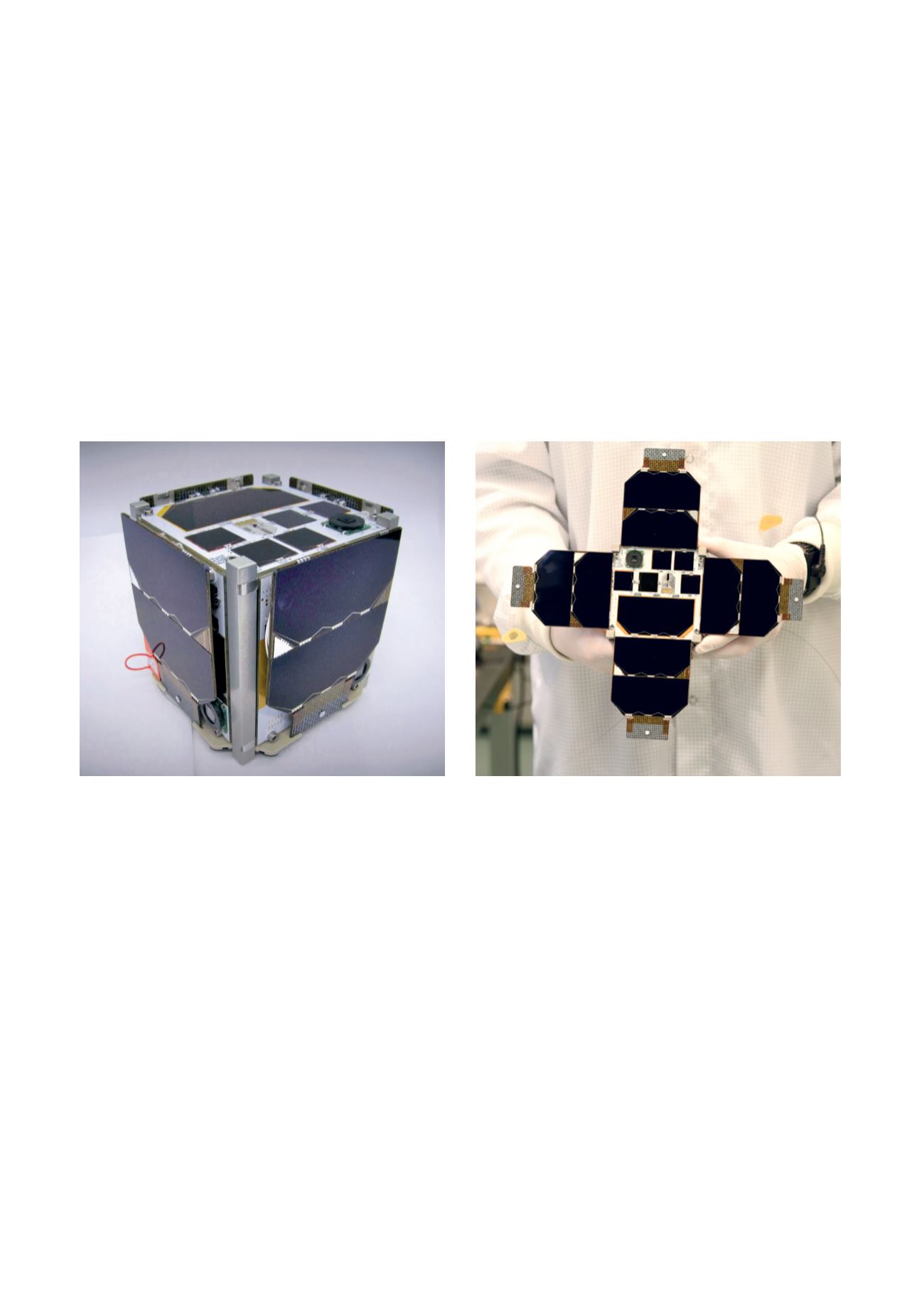

268
Astronautics
Real-time telerobotics in space – exploration and human spaceflight – spacecraft technologies and nano-satellites
– spaceflight systems engineering – hypervelocity-laboratory
n
In 2017, the Institute of Astronautics (LRT) continued its multi-faceted research for the
development of novel satellite and space exploration technologies including:
■■
Spacecraft/CubeSat nano-satellite and sub-system
development,
■■
Real-time teleoperation technologies for on-orbit ser-
vicing including novel satellite communication systems,
applications and architectures,
■■
Human and robotic exploration technologies, incl.
lunar regolith processing and resource extraction,
and analysis of life support systems of habitats and
space suits,
■■
Space environment testing including high velocity
impact physics, lunar dust abrasion/damage mitiga-
tions, and micrometeoroid/space debris simulation and
assessment.
Satellite Technologies – MOVE-II CubeSat
The CubeSat program MOVE (Munich Orbital Verification
Experiment), initiated in 2006, focused on the hands-on
education of students, complementing theoretical
classwork knowledge in state-of-the-art aerospace
engineering. The program’s second CubeSat, MOVE-II, is
currently undergoing final tests and will be launched into a
575 km sun-synchronous orbit in mid-2018. MOVE-II is an
educational cooperation between the LRT and the student
group ‘Wissenschaftliche Arbeitsgemeinschaft für Raket-
entechnik und Raumfahrt’ (WARR) with overall more than
130 students involved so far. MOVE-II is also intended as
Figure 1. The MOVE-II CubeSat in launch configuration (left) and deployed configuration (right)
a platform for validating new technologies in space. The
1.2 kg satellite will carry a self-developed attitude determi-
nation and control system, two radio transceivers and four
deployable solar panels held down by a reusable shape
memory mechanism. The research payload of the MOVE-II
satellite will characterize novel 4-junction solar cells in the
actual space environment.
The MOVE-II project is funded by DLR (German Aero-
space Center – Space Administration) research grant
no. FKZ 50RM1509, managed by Dipl.-Phys. Christian
Nitzschke at the DLR Space Administration in Bonn.



















